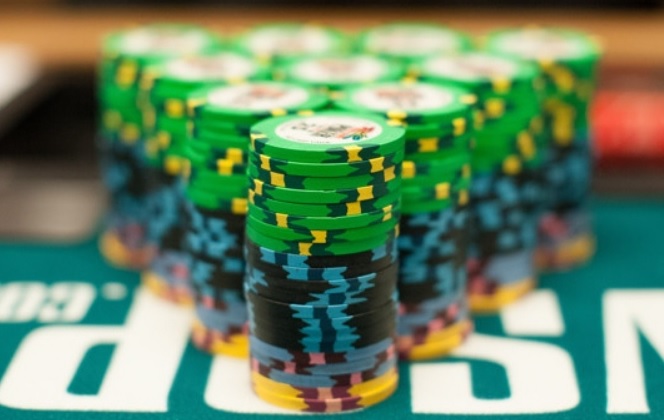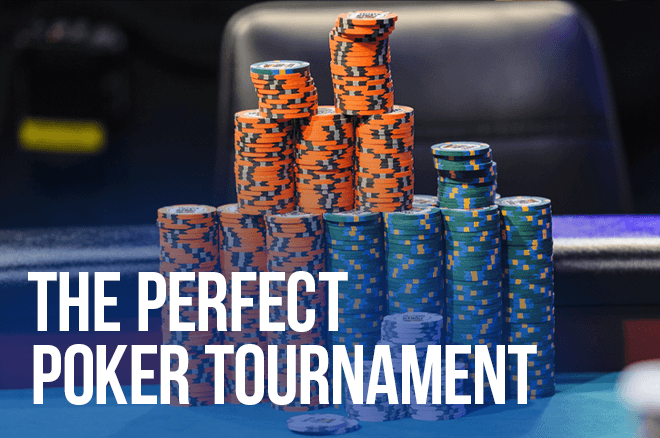Big Blind Ante Poker Tournament

- Big Blind Ante Poker Tournament Rules
- Big Blind Ante Poker Tournament Results
- Big Blind Ante Poker Tournament Odds
Many players tense up when their stack reaches 15 big blinds and below. In truth, you should relax; with a stack this short, poker just became really easy to play. Instead of having to figure odds and read players, all you have to do is decide whether to shove or fold. At this stage of a tournament, I can give you as close to a poker 'system' as there is available.
There is a revolution taking place in tournament poker right now in the form of the big blind ante. Started by players in ARIA High Roller events, the concept has expanded to the world’s largest brands and tournaments. The debate on how to best implement the big blind ante has been a major discussion among the poker community on social media. This year, we’ve seen big blind or button ante tournaments sprout up everywhere. Unibet Poker’s Dara O’ Kearney believes that it’s an inevitable progression from an outdated system. O’Kearney: I think there are some small problems with button ante and big blind ante, but what you gain in terms of the speed and the dealer not having. The big blind ante is likely to win out over the button ante, purely for the flow to the game of poker it helps to maintain. But the pros still have some concerns, with both the button ante and the big blind ante.
11-15 Big Blinds
Big Blind Ante Poker Tournament Rules
First in with this size stack you're too short to raise and then fold, but too deep to risk your whole stack on poor holdings. Stick to very premium hands in early position -- throw away AQ offsuit and KQ suited under the gun, and stay away from the smaller pairs. In late position, you can open it up a great deal, but if there are no antes, don't get too crazy. With the right type of opponents, you can make a small raise or limp with Aces or Kings if you are near certain that it will be raised behind you so you can go all in when the action gets back to you. But if there's any doubt, you're better off just pushing your chips in the middle with your big pairs.
Ten Big Blinds and Under
Poker is real easy now. With this stack, you can play unexploitable poker. Using Independent Chip Modeling and the Nash Equilibrium you can solve every situation with your stack size and hand versus however many random hands are left to act behind you. Don't know what ICM and Nash Equilibrium are? Professional card player, Chris 'Fox' Wallace and myself did the heavy lifting for you and put our charts up at pushfoldcharts.com. Go to pushfoldcharts.com and study the charts—or buy one to take with you to the card room. They give you all the information you need on what cards to push with and what cards to fold.
Though the charts give you the unexploitable ranges, there are still some adjustments you should be making, listed below.
The Six-Big Blind Rule
When you reach six big blinds, it can become correct to raise even wider than the charts suggest. This is because six big blinds is about as low as you can go and still expect people to fold to your raises. Once you fall below that number, people begin to call very loosely—often with any two cards—and the potential profit from people folding (which is the most important part of these small stack calculations) drops to nothing.
Under Five Big Blinds
You're almost certainly going to get called when you go all in with a stack under five big blinds. Due to the pot odds and the fact that there are still a few opponents who will fold their trash incorrectly, it's still correct to push with most of your hands here. But the knowledge that you are likely going to get called can still affect your choices. If you have a true trash hand (seven-deuce offsuit springs to mind) and the next players on the blinds are very weak you might fold and hope to get it in first next hand. If there are no antes and you can look at a bunch more hands for free, you might fold. But if there are antes and you are first in, your best option for most hands is to push and pray.

Table Image
Big Blind Ante Poker Tournament Results
Another good reason to play very tight early in a tournament is so that when you get to the late stages people will give your raises respect. As above, the potential profit from people folding—called Fold Equity—is key to successful push/fold strategy. If you can convince your opponents that you only put all your chips in the pot with a nut hand, your fold equity, and your entire tournament equity, goes way up.
One of the recent trends in online poker is the introduction of No Limit Hold’em cash games with an Ante. Major sites such as FullTilt, UB (formerly UltimateBet), and Absolute Poker have added these games to their lobby looking to attract more players. Ante games tend to bring more action and create bigger pots, which is great for those looking for some instant excitement.
Those who learned the game by playing live (casino) poker might already be familiar with antes. For those who are unfamiliar with antes they are another forced bet before the flop typically 20-25% the size of the Big Blind. Before each hand is dealt players will “ante up”, creating a pot prior to the start of the hand. In some live games, players ante up just once each round when they are on the button. In this case, players will ante a much larger amount, but only have to do it once every orbit.
Understanding how the ante affects the game will go a long way in adjusting your strategy for ante games. First of all, the use of the ante automatically creates a larger pot before the flop. This “dead money” in the middle attracts a lot of action as players fight over the blinds and the antes pre flop. The simple fact is ante games play looser than non-ante games, which can be both beneficial for tight and loose players.
For loose players, ante games are great because they are already used to raising and re-raising pre flop. Because of this, the antes are an added bonus they earn every time they take down a pot. Most successful loose players (called LAGs) are great at playing a wide variety of hands from later position while remaining relatively tight from earlier position. This is a great strategy for ante games because it allows them to continue to win a lot of pots all the while still being successful in the overall game. The last thing you want to do is spend your entire stack going after a few extra bucks. Finally, loose players are used to being loose. This might seem obvious but LAGs are used to marginal situations holding mediocre hands while TAG (tighter players) will be uncomfortable having to play more hands.
Tighter players can still remain profitable in ante games. Most of these players make their money by sitting back and waiting on strong hands. While this may not seem like a great idea because of the antes whittling down their stacks, remember this is a cash game, not a tournament. Even though their stacks might take a small hit each hand, the TAGs can reload their chips in between deals, thus allowing them to gain maximum value when they happen to catch a hand. Because these games play much looser, the TAGs should be able to get paid nicely when they happen to connect. Also, as the pots are bigger before the flop, they can easily become out of control post flop, which is great for those who are generally holding premium hands.
Big Blind Ante Poker Tournament Odds
You might be asking yourself which strategy is correct? The answer is not so simple. The best advice is to continue to play your normal game and adjust accordingly. If you find the ante games are very loose and/or aggressive then tightening up and waiting for a strong hand can pay great dividends. If your table seems to be tight and unwilling to gamble, then loosening up pre-flop can result in winning a lot of additional smaller pots which ultimately add up to a big score. The main thing to remember is the ante games are still poker; you should always be trying to make the best available play by breaking down your options along with your opponents actions.